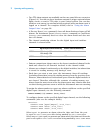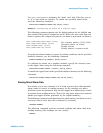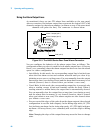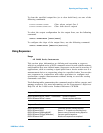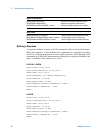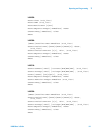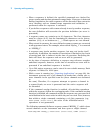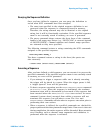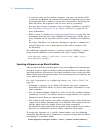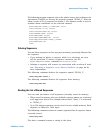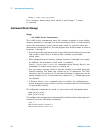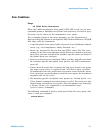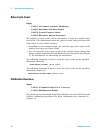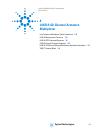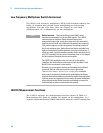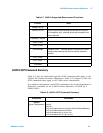94 L4400 User’s Guide
3 Operating and Programming
• A sequence may invoke another sequence. but may not invoke itself
recursively. In addition, the number of invocations is limited to four levels
of nesting and this is enforced at the time of execution. Exceeding the
limit will abort the sequence and an error will be generated.
• You can also execute a sequence when an alarm condition is reached.
See “Executing a Sequence on an Alarm Condition" on page 94 for
more information.
• While a scan is running (see “Scanning Applications" on page 69), the
instrument prevents use of all channels in banks that contain one or
more channels in the specified scan list (these channels are dedicated
to
the scan). Therefore, if a sequence attempts to operate a channel in a
scanned bank, an error is generated and the entire sequence will
be discarded.
The following command executes a sequence named “MYSEQ_1”, which
closes several channels on the module and opens a single channel.
ROUT:SEQ:DEF MYSEQ_1,"ROUT:CLOS (@1001:1009);OPEN (@1011)"
ROUT:SEQ:TRIG MYSEQ_1
Executing a Sequence on an Alarm Condition
After you have defined a valid sequence, you can configure the instrument to
execute a sequence when a reading crosses an alarm limit on a channel. The
specified sequence will execute once when an alarm occurs on the specified
alarm. If the specified sequence name is not currently stored in memory, an
error will be generated.
For more information on configuring alarms, see “Alarm Limits" on
page 84.
• Assigning a sequence to an alarm will remove any other sequence's
association with that alarm, as well as that alarm’s association to any
other sequence.
• You can assign multiple channels to either of the two available alarms
(numbered 1 and 2). You cannot, however, assign alarms on a specific
channel to more than one alarm number.
• The sequence will execute once when an alarm occurs, after which the
trigger source will be automatically set to MANual. The sequence will not
execute again until the trigger source has been reassigned,
the alarm has been cleared, the association of the sequence to the alarm
has been re-established, and the alarm condition exists again.
To assign the sequence to a specific alarm number, use the following
command. Specify the MANual parameter to remove an association without
reassigning it to another alarm.
ROUTe:SEQuence:TRIGger:SOURce <name>,{ALARm1-ALARm2|MANual}



